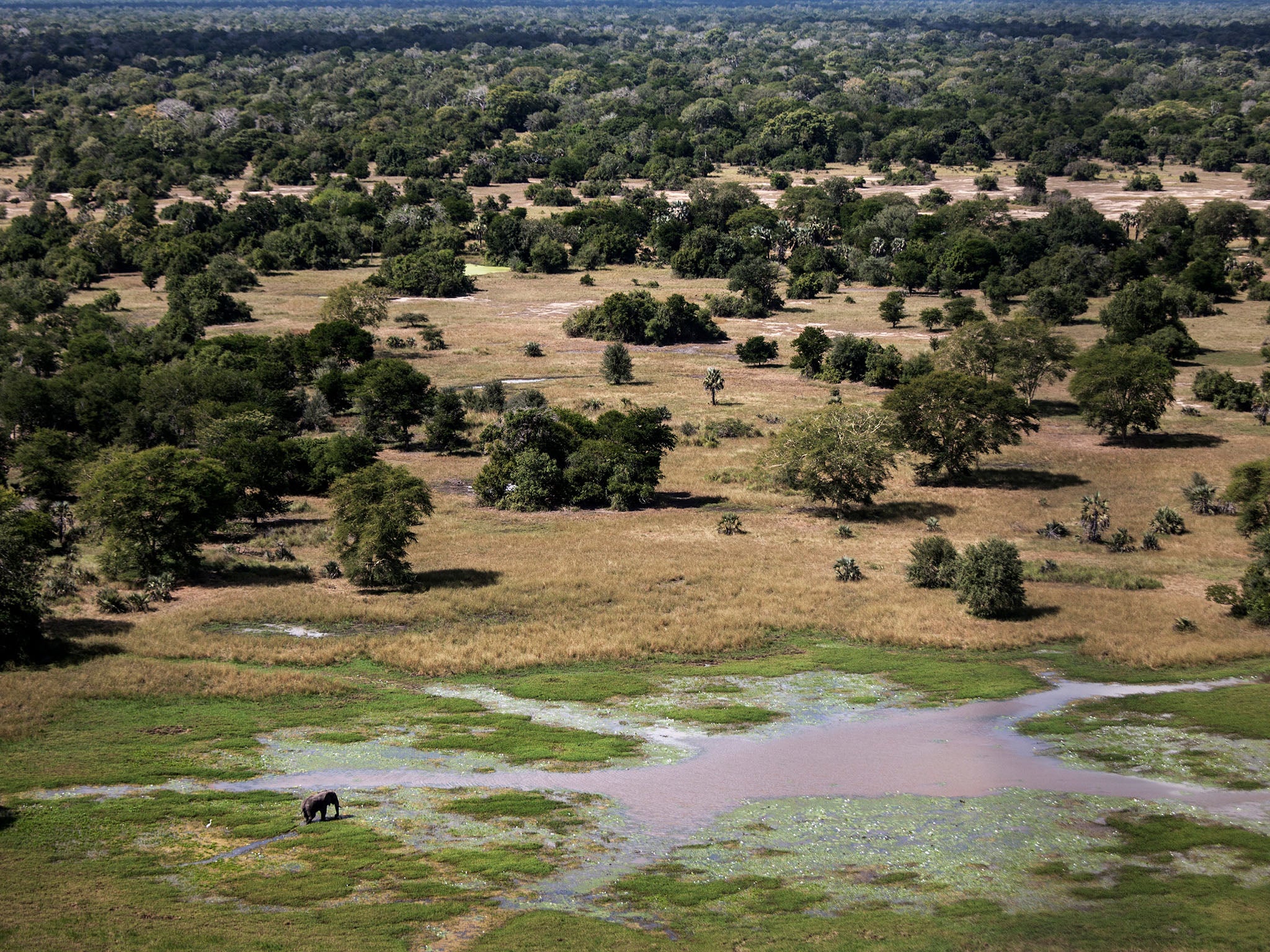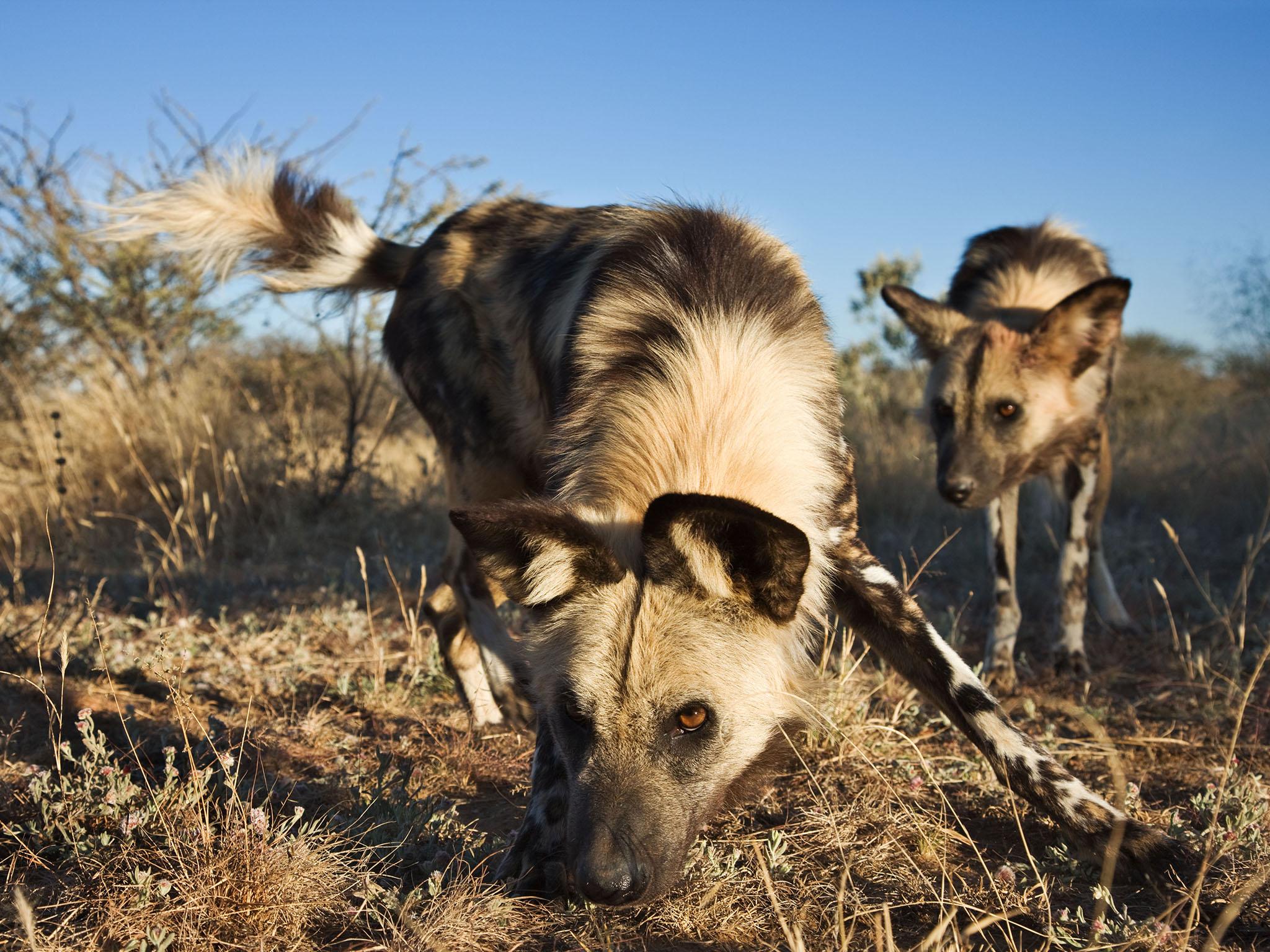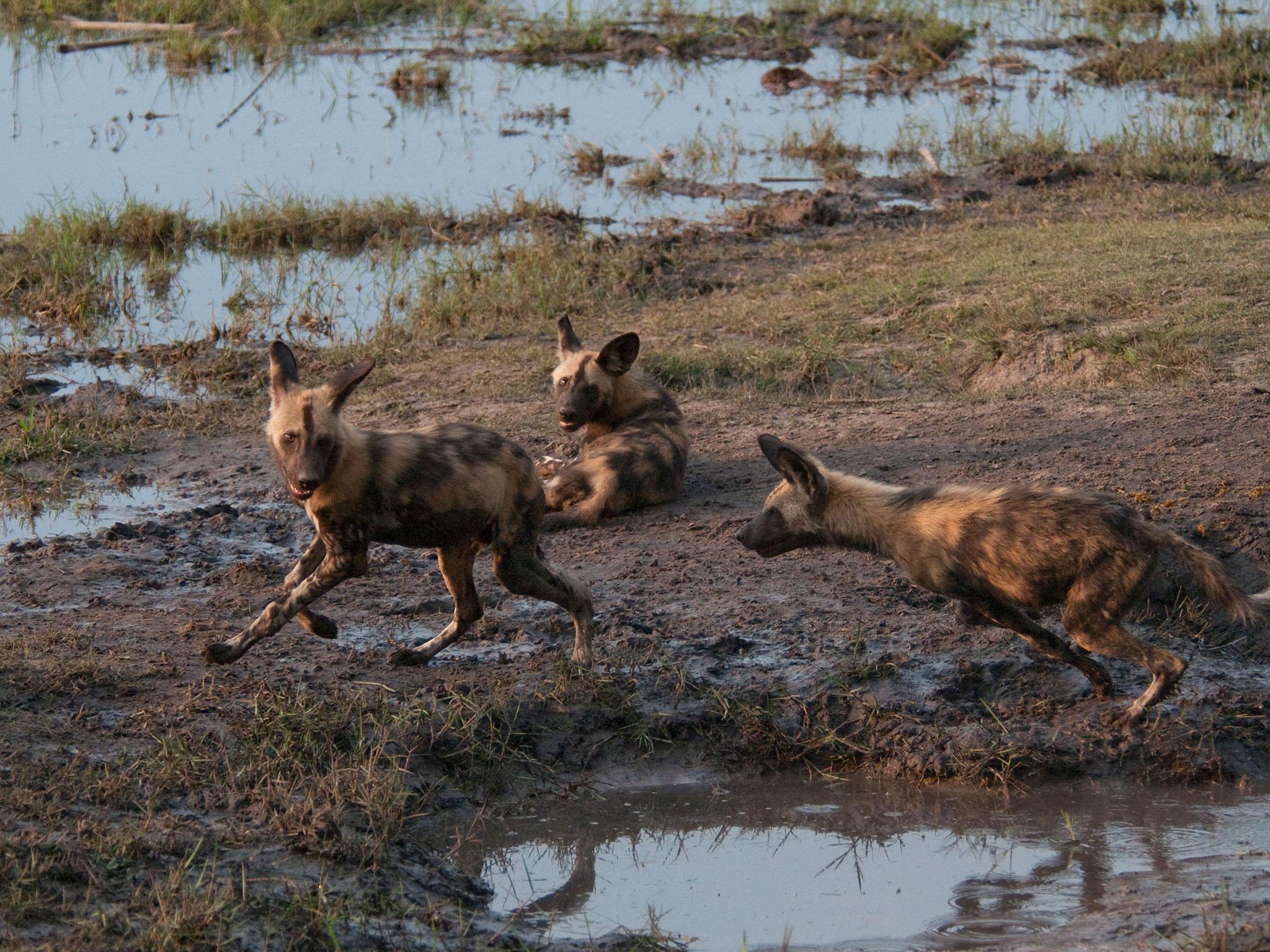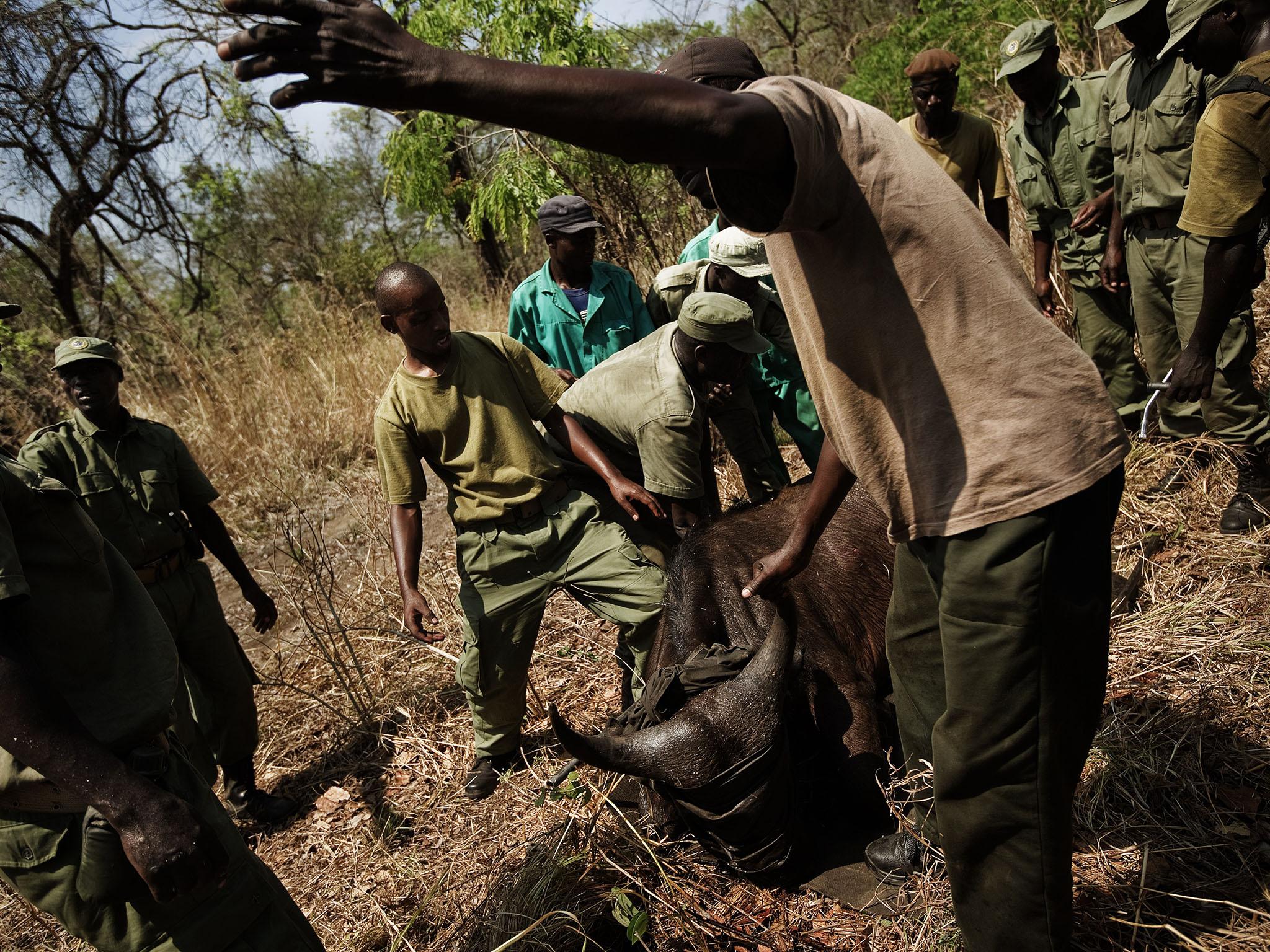How Gorongosa National Park in Mozambique is recovering after a brutal 16-year civil war
One of Africa’s many photogenic safari destinations is an ongoing experiment in how nature recovers from the equivalent of a massive haemorrhaging event

Your support helps us to tell the story
From reproductive rights to climate change to Big Tech, The Independent is on the ground when the story is developing. Whether it's investigating the financials of Elon Musk's pro-Trump PAC or producing our latest documentary, 'The A Word', which shines a light on the American women fighting for reproductive rights, we know how important it is to parse out the facts from the messaging.
At such a critical moment in US history, we need reporters on the ground. Your donation allows us to keep sending journalists to speak to both sides of the story.
The Independent is trusted by Americans across the entire political spectrum. And unlike many other quality news outlets, we choose not to lock Americans out of our reporting and analysis with paywalls. We believe quality journalism should be available to everyone, paid for by those who can afford it.
Your support makes all the difference.The 14 African wild dogs were ravenous, dashing back and forth along the fence of their open-air enclosure, or boma, bouncing madly on their pogo stick legs, yipping their distinctive calls, and wagging their bushy, white-tipped tails like contestants on a game show desperate to be seen.
Since arriving at the park three months earlier, as they acclimatised to their new setting and forged the sort of immiscible bonds that make Lycaon pictus one of the most social mammals in the world, the dogs had grown accustomed to a daily delivery of a freshly killed antelope to feast on.
But it had been nearly 48 hours since the pack’s last meal and the dogs we ravenous. Good job the food truck was on its way.
Paola Bouley, the park’s associate director of carnivore conservation, and two of her colleagues rode up to the fence in a pickup, opened the gate, edged the vehicle just inside the boma and began lowering the carcass of a male impala.
As she stood in the back of the truck, Bouley gripped a rope tied to the antelope’s rear legs, with the intention of luring the dogs from the comfort of their enclosure by slowly dragging their breakfast outside. Nice idea, but the dogs could not wait.
They snatched at the carcass, tried disembowelling it in mid-air, yanking at the rope so violently they practically pulled the extremely fit Bouley to the ground.
After a brief moment of panic, a new plan was hatched. Tie the rope to the truck instead.
Again, lure and vehicle inched out through the gate, and this time the dogs followed, their coats the colour of army camouflage, their ears the size of soap dishes.
The dogs bounded to freedom and fell on the impala en masse, just as the scientists hoped they would do.
Except something was wrong. The dogs stopped eating. They ran around in confusion.
One dog was missing, and not just any cur: It was the top dog, the alpha female of the pack. Where was their queen?

The scientists scrambled, too.
“It’s Beira – she’s still inside,” Bouley called out, referring to the name chosen for the alpha female by local schoolchildren in honour of the capital city of their province.
Loping over to the assembled observers, Bouley said: “She’s not coming out. She’s cautious. She’s always been cautious.”
Now more so than ever as Beira was pregnant with pups that the entire pack would help raise. There was too much commotion. “I’m afraid I’ll have to ask you to leave,” Bouley said.
It’s tough trying to resuscitate one of Africa’s most storied and biologically diverse national parks from a state of near-annihilation, the result of a brutal 16-year civil war in which an estimated 1 million Mozambicans were killed and a huge swath of Gorongosa’s wildlife destroyed. Tough, but by no means impossible.
Thirty minutes after dispersing her guests, Bouley sent a joyful update: all pack members had left the pen, and the gate had been closed to prevent their re-entry. The dogs had polished off their last free brunch and were exploring the neighbourhood, clearly eager to resume their career as team hunters par excellence.
“This is a very special time for me,” said Pedro Muagura, Gorongosa’s park warden. In Mozambique, he said, many families have a totem animal, and his family’s is the wild dog.
Yet until the gang of 14 had been relocated from several sites in eastern South Africa as part of Gorongosa’s restoration plan, the only time Muagura had encountered a wild dog was as roadkill.
“To see live dogs in my own country, to have them released into Gorongosa, that is a beautiful thing.” he said, almost tearfully.
Over the next several days, the ebullient carnivores managed to dispatch another impala and two waterbucks – beefy, handsome antelopes with bright bull’s eye markings on their rears.
They are all too common in Gorongosa.
Beira’s pregnant belly bulged ever more visibly, and the pack were digging her a den. Lions were no longer the only resident meat-eaters able to keep the spreading herds of grazing mammals in check.

Another apex predator, absent for decades from the park’s 1,500 square miles, was back – yet more evidence that Gorongosa is on track for a great second act.
A Massive Experiment
Named after a mountain on the rim of the park that in turn was named after the Mwani term for “place of danger,” Gorongosa is far from the largest national park or game reserve in Africa.
Kruger National Park in South Africa is five times its size. Gorongosa is not even the biggest park in Mozambique.
Yet Gorongosa stands out from the continent’s many photogenic safari destinations as a kind of living laboratory, an ongoing experiment in how nature recovers from the equivalent of a massive haemorrhaging event, and which parts mend best when left to themselves and which require infusions of new blood.
Gorongosa has attracted the attention of scientists from around the world who see an opportunity to address, in real time, fundamental questions of ecology, evolution, the rise and fall and shifting distribution of species, and changes in what researchers call the landscape of fear.
The bushbuck of Gorongosa, for example, are unusually brazen about venturing away from the concealing foliage that surrounds termite mounds, where the shy, slender antelope traditionally are found.
Instead, Gorongosa’s bushbuck are grazing in open grassland, with all the cockiness of African buffaloes or zebras.
Is that good, neutral or destructive to the local habitat – to the mix of vegetation and its microfaunal throngs, the flow of water, the cycling of nutrients, the ease with which dung beetles can put the far-flung bounty to use? And how long before the insouciant bushbuck realise that Gorongosa’s predators are multiplying and heading their way?
Gorongosa is at once more and less “natural” than other game reserves in Africa. “There are no fences around Gorongosa, and that’s the way a park is supposed to be,” said Test Malunga, a field guide at the park.

At the same time, park management, with the blessing of the Mozambique government, has decided to “actively encourage and promote science,” said Robert Pringle, an ecologist at Princeton University who is on the Gorongosa Project’s board of directors.
As a result, researchers are not confined to simple observational studies of the park’s free-ranging wildlife.
They can manipulate field conditions to narrow down the spurs to animal movement and foraging choices. They can dart animals to take blood samples, measure their vital signs and then outfit them with GPS collars – and for the elephants, that means necklaces big enough to girdle an oak tree.
“Many parks limit or even prohibit such activities,” Pringle said. “But without them you can’t have a truly science-based management strategy or definitively answer burning questions at the forefront of ecological knowledge.”
Gorongosa also is preternaturally lucky to have a wealthy benefactor dedicated to the park’s restoration and future.
Since 2004, Gregory Carr, who made a fortune in telecommunications before turning to full-time philanthropy and human rights advocacy, has spent tens of millions of dollars on the park and the 1,300 square miles of buffer zone that surrounds it, where some of the poorest communities in Mozambique, and hence in the world, can be found.
Carr, 59, is genial, driven and unerringly gregarious, a kind of L pictus in a baseball cap, always looking for new connections, new ideas for helping the park and its people, new ways to win over sceptics and bridge political divides.
Despite recurring guerrilla skirmishes in the region, Carr said, “I think the park has done a pretty good job of being everyone’s friend.”
His foundation and various donors-in-arms have invested in local schools, mobile clinics, bee farms, sustainable coffee plantations, girls’ clubs, and a master’s program in conservation biology for Mozambican students. The classroom is Gorongosa.
“It’s the only conservation biology program in the country,” Carr said. “We’re told it may be the only one in the world taught entirely in a national park.”
Yet thorny sociocultural challenges remain.
Carr is a white American with a lot of money, and though Gorongosa is a national park that belongs entirely to Mozambique, Larissa Sousa, who works in the department of human development at the park, said that many people in the region believe Carr is the owner of Gorongosa, and they have never been inside.

In fact, Gorongosa park was founded by colonial Portugal in 1960 largely for the pleasure of affluent western adventurists, but it was quickly claimed as a national treasure when Mozambique won independence in 1975.
Behind the park’s splendour, explained Piotr Naskrecki, an associate director of research at Gorongosa, is its location at the southernmost tip of Africa’s Great Rift Valley, a massive geological formation that, over millions of years, has channelled huge amounts of biodiversity into Mozambique’s midriff.
To the east of the rift is soft limestone, kneaded and puckered by water into caves and gorges and giving rise to riverine forests, replete with endemic bats, crickets, molluscs and millipedes that thrive on the limestone’s calcium bounty.
On the western rim is hard granite and granitic soils that nurture an entirely different assemblage of life-forms, like a newly discovered species of lizard that wedges itself deep into rock cracks, beyond a predator’s reach.
In the middle are the floodplains, cycling seasonally between deluge and drainage, and turning tuxedo-black with concentrated nutrients on which vegetation can bloom and herds of herbivores can fatten.
Spanning elevations from sea level to 6,000 feet at the top of Mount Gorongosa, the park is a great mixtape of “nearly every conceivable habitat,” according Naskrecki. Alpine forest, montane meadow, woodland savannah, grassland, scrub forest, a touch of true rain forest.
And as you drive through it, bumping over roads so deeply rutted you feel like a human castanet, you realise you’ve never been so happy in your life.
Ecological Disaster
In the 1980s, the music stopped. A civil war broke out, the park was shuttered, and government and rebel forces turned Gorongosa into a battlefield and makeshift abattoir.
Elephants were slaughtered for their tusks. Elands, sables, wildebeests, zebras and other large herbivores were hunted for meat or sport. Lions, leopards and hyenas were killed for being in the way, and many animals simply died of starvation.
By the time the fighting and rampant hunting ended in the mid-1990s, the park’s thundering census of large mammals had been slashed by 95 percent, to numerical whimpers: 15 African buffaloes here, six lions there, five zebras, a few dozen hippos and elephants.
Park infrastructure had been destroyed. Only Gorongosa’s bird life, some 500 species strong, survived relatively intact.
The park’s wildlife began recovering, but slowly, and on visiting the park in 2003, Carr said, “I could drive around all day and not see a single animal.”
After consulting with a broad range of experts, Carr proposed to the Mozambican government a public-private partnership that he hoped would both hasten the recovery of Gorongosa’s grandeur and lift the economy, too.
“Being an economic engine and a promoter of human rights, that’s a new way to think about national parks,” Carr said. “The people who live around here, this is their homeland, and they have a right to live in a decent environment that can sustain them.”
The team started by restocking the larger herbivores, importing 200 buffaloes and 200 wildebeests from South Africa.
As the bulk grazers began trimming back the overgrown grassland, the park’s array of smaller antelope species, with their twisty, calligraphic horns and their Modigliani faces, could get through to feed and more reliably breed.
The expanding prey options soon lofted the lion count, which in turn began luring back tourists for whom a lion sighting is synonymous with a safari vacation.
But the lions alone could not handle the swelling ranks of herbivores and omnivores, and Gorongosa’s scientists realised the park needed a more diverse guild of predators.
Where were the leopards? Leopards are the most widespread great cats in the world, yet for mysterious reasons they hadn’t found their way back to Gorongosa.
As a result, Gorongosa’s baboons, a favourite leopard menu item, are breeding like grey squirrels, devouring everything they can get their unfastidious fingers on and moving fearlessly through the landscape.
“You don’t elsewhere in Africa see baboons walking on the ground at night or sleeping on the ground,” Pringle said. “But here you do.”
The researchers’ efforts to import leopards from elsewhere in Africa have proved legislatively challenging, and so they were thrilled when an adult male leopard, a voluntary immigrant from the buffer zone, showed up in late March and as of midsummer appeared to still be around.
The scientists admitted they have made mistakes. “We tried to introduce the cheetah,” Naskrecki said. “But we learned this is not the right environment for them, and historically they have not been here.”
African wild dogs, by contrast, have a history in Gorongosa and are under fewer trade restrictions, and Bouley said another pack would be introduced in 2019.
Other puzzling aspects of Gorongosa’s recrudescence remain. On most African reserves, for example, waterbucks are uncommon, bit players compared to other antelope species. In Gorongosa, their numbers have exploded to 50,000.
A possible explanation: As one of the few species able to persist on the floodplain year-round, through low water and high, waterbucks may have stayed out of target range during the war and been well positioned to rebound when the shooting stopped.
The waterbuck’s triumph, however, may incidentally be slowing the recovery of another water-loving mammal: the hippopotamus.
Zebras also have had a surprisingly hard time regaining their footing.
Elephants have nearly rebounded to their pre-war numbers, the population notably enriched in individuals that naturally lack tusks and thus were spared the selective wrath of ivory poachers.
“Gorongosa is not a Ming vase that we’re trying to restore,” Pringle said. “It’s a dynamic ecosystem in recovery” — working like a dog and getting better all the time.
© New York Times
Join our commenting forum
Join thought-provoking conversations, follow other Independent readers and see their replies
Comments